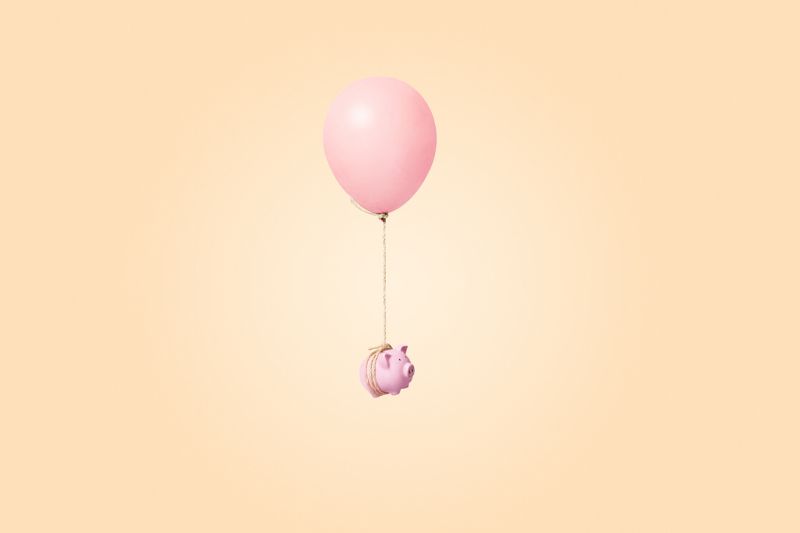When historians assess the financial history of this century it is likely that the decision to remove Russia from the SWIFT system of international transfers is considered the moment when the it started to dawn on most of the world that the global financial system is a giant fiction removing itself further and further from reality.

It is the equivalent of Hans Christian Andersen’s story the Emperor’s New Clothes when the monarch is convinced that invisible clothes make him look magnificent when in fact he is naked. His subjects go along with the fiction until a boy points out that he has nothing on and the delusion is pricked.
Western leaders, believing that money is real and reality is secondary, thought that taking Russia out of SWIFT would crater the Russian economy. It was plan A in the war to break up Russia, an act of economic war.
It did not work. Instead, it has damaged European economies, while Russia’s economy has stabilised. The country simply demanded to be paid in rubles instead of US dollars or Euros. The Europeans and Americans claimed this was blackmail. It apparently came as a surprise to them that for a deal to occur both parties have to agree and Russia could only be paid I its own currency because it had been barred from using any other.
It is significant enough as a financial event because it has pushed one of the world’s major commodity exporters out of the international system (and of course bred a plethora of middle men to get around any sanctions, which is what nearly always happens). Russia has developed a significant manufacturing base and after years of sanctions has become mostly self sufficient, especially, as it turns out, in producing military hardware. Anything the country does not have it can easily get from China, which manufactures more than Europe and the US combined.
The more significant development is the utter nonsense being spouted by financial analysts and Western leaders about what has happened. That is the Emperor’s new clothes and they have been worn for about four decades.
'According to the International Monetary Fund, in 2022 total world debt was 237 per cent of global GDP, or economy.'
The first concern is that the US dollar is about to lose its status as the world’s reserve currency. There is no evidence of that. According to the Bank for International Settlements triennial bank survey about $US7 trillion is transacted per day with the US dollar on one side. Approximately half of all cross-border loans, international debt securities, and trade invoices are denominated in U.S. dollars, and 60 percent of global foreign exchange reserves are in dollars.
There have been mutterings about the end of the ‘petrodollar’, the deal struck by President Dwight Eisenhower and the King of Saudi Arabia to denominate oil sales in the greenback. That might have been significant in the 1950s. The amounts involved are trivial as a percentage of overall turnover now.
Then there is the small matter that two plus one equals three. It seems that this simple arithmetic proves too challenging for the high tech mathematicians who analyse finance. For there to be a serious competitor to the US dollar in the foreign exchange markets there has to be a third currency so that two major currencies can bypass the greenback. The only candidate is the Chinese yuan and that is fixed to the US dollar; it is essentially the same.
Neither are there any signs that the Chinese will float the yuan because they do not want to expose themselves to extreme currency volatility, especially a revaluation of their currency that would make their manufacturing exports uncompetitive. They have fixed it for a reason and it has worked reasonably well for them.
Then of course there are analysts, especially those who want to return to the gold standard (money backed by physical gold) who complain about what they call ‘fiat’ money: money created by government fiat.
'Unpayable debt is the consequence of the central delusion; the belief that money can endlessly be made out of money itself and the real world of tangible things and actual value creation will simply follow along obediently.'
This is the opposite of the truth. Governments set some rules, especially about physical cash, but since the financial deregulation four decades ago, most money is not created by government fiat but by the private sector, especially banks and traders in the financial derivatives that dominate the foreign exchange markets. It is not government fiat that is the problem; it is private sector greed.
The consequence has been a massive debt blow out. According to the International Monetary Fund, in 2022 total world debt was 237 per cent of global GDP, or economy. In 2021 total US private and public debt was 377 per cent of GDP and China’s debt is of similar proportions. Australia’s public debt is comparatively low; in 2021 it was 58 per cent of GDP, which was only 60 per cent of the world average. But private debt, more than half of it household debt, is over 200 per cent of GDP.
Unpayable debt is the consequence of the central delusion; the belief that money can endlessly be made out of money itself and the real world of tangible things and actual value creation will simply follow along obediently. The tactic has worked for 30 years or so, but the Emperor is naked. Russia has been the first to expose it; there will be many more.
Finance relies entirely on trust in a set of rules because money is only rules (which is why you can’t ‘deregulate’ it). That trust is in danger of steadily evaporating.
David James is the managing editor of personalsuperinvestor.com.au. He has a PhD in English literature and is author of the musical comedy The Bard Bites Back, which is about Shakespeare's ghost.
Main image: Piggy bank tied to balloon. (Getty images)